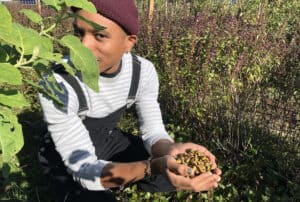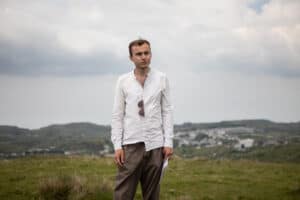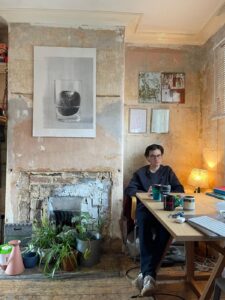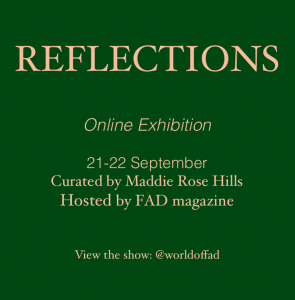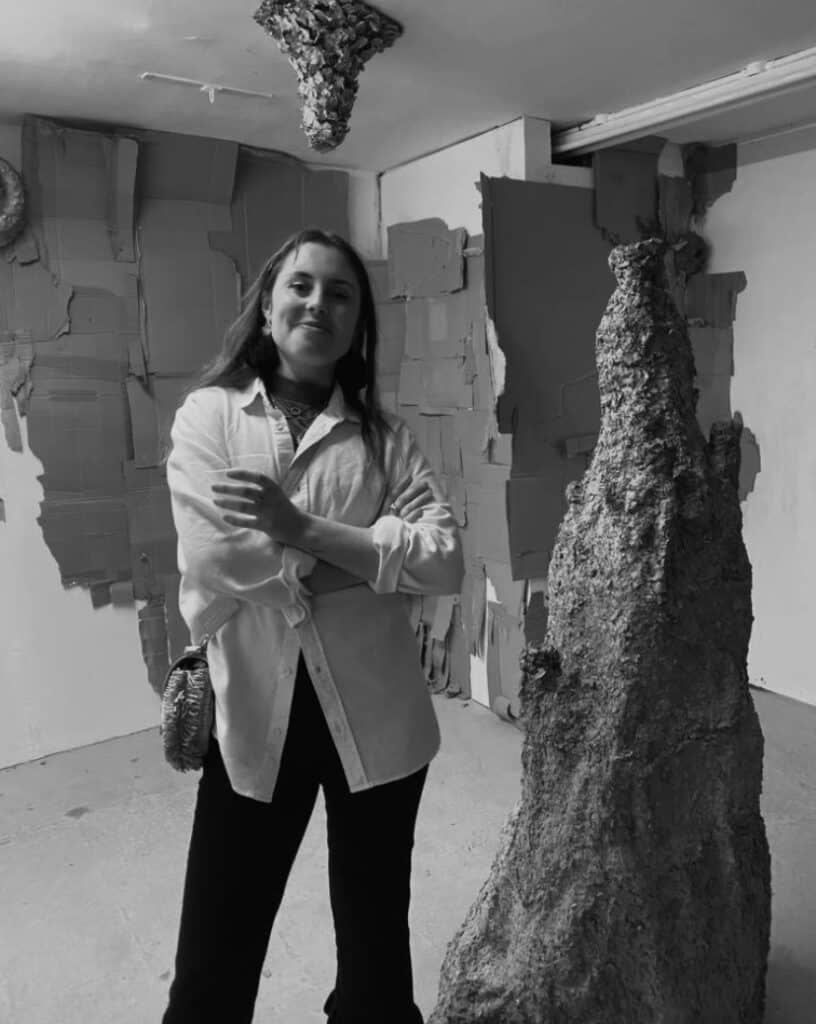
Maddie Rose Hills is an artist, researcher and curator. She is building a brand new website called Mater, which is dedicated to stories about materials. Ocki Magill is a friend and the founder of Blue Shop Cottage Gallery in South East London. The gallery specialises in emerging and mid-career artists with a long roster of shows in the physical space and online throughout the year. Ahead of the launch of Mater, Ocki interviewed Maddie about the project, her interest in materials, and some sneak peeks at what to expect from Mater.
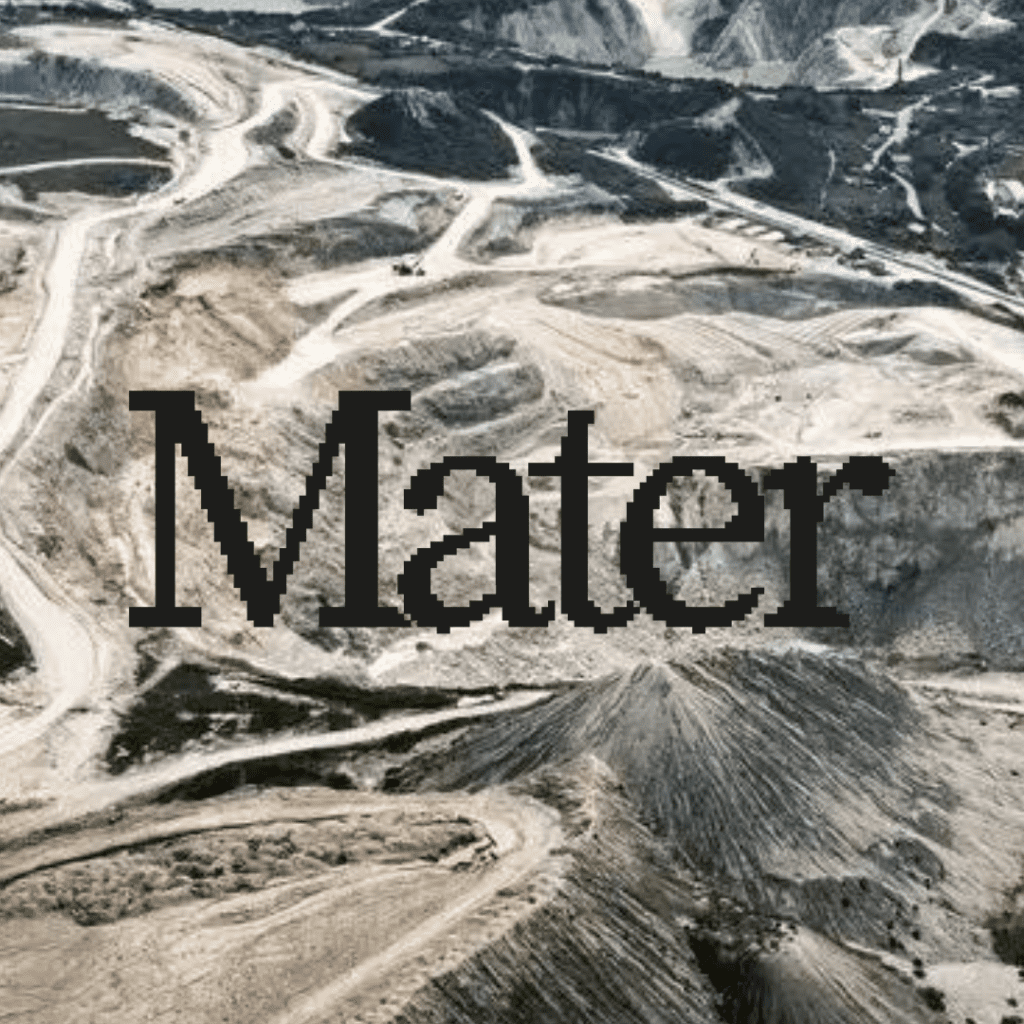
Ocki Magil: I loved coming to see the end of year show at City & Guilds of London Art School, and being transported into the mycelium of all your termite structures. I remember having a pint with you after your first week on the course and talking about ‘material’ from a philosophical standpoint and it actually blew my mind a little. Can you talk a bit about how the course has affected your work?
Maddie Rose Hills: I loved that chat we had because you felt exactly the same as me, just mind blown by the whole thing, and I had so many conversations like that with friends, where we would talk about some of these ideas that were just changing our perception of the world. There’s something about learning outside of an educational environment. We should really be learning everyday.
But I specifically remember reading about Anselm Keifer ten years ago. It was about how every atom in the universe has been here since the beginning of time. The atoms move from leaf to air particle, to breath, to blood, to soil, to worm, from thing to thing, constantly being recycled. This was it for me. The idea that the same atoms have existed through all historical events, every geological epoch, dinosaurs, comets, ice ages, everything. If our bodies are essentially borrowed matter, then what does it mean to be us? I have been intrigued by that notion ever since; through existential moments; art as layers and layers of paint and found materials when we first met; right up to working on Mater.
Then, during my Masters, we were taught about the history of philosophy from a material perspective (we were taught a predominantly western canon of philosophy, and there is a lot more to the broader history which I am excited to dig into through books like Taking Back Philosophy). My tutor rooted these very ideas about the atom (which I had been low key obsessed with) in philosophical histories. Beginning with Heraclitus’ you can only step into the same river once (he was a 6th century philosopher, who wrote that everything on earth is in constant flux), and the 20thc and Deleuze’s idea of ‘becoming’ (loosely, that nothing, in reality, is a singular, definable thing, but a network of interconnected processes, at various stages of ‘becoming’, with no start or endpoint). We were taught these ideas right up to New Materialism, with the idea that all matter, including our bodies, is constantly forming and reforming. This examines how humans engage with the world, and how we have tended to separate and raise the human species above others. These ideas discovered through Anselm Keifer 10 years ago, now had a grounding in not only contemporary art and politics but in every aspect of the world around us. My work has become really inspired by that, through the desire to expand this knowledge, down to the materials I use in my own practice. And now I get the chance to work with amazing artists like Hannah Rowan, who is contributing a piece of writing to Mater. Rowan’s work explores these ideas of flux through a materials-led art practice. The philosopher I mentioned who taught me, called Matthew Rowe, will be contributing to Mater, with an expansion and exploration of some of these ideas.
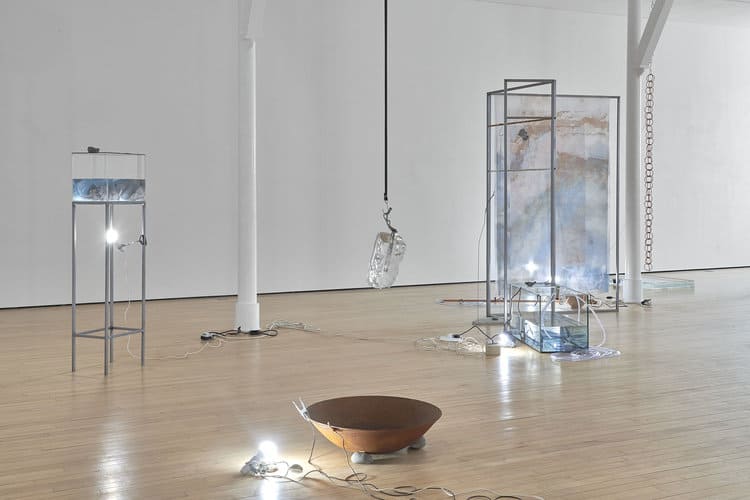
To many people, these concepts are second nature, so much so that they might find it unnecessary to describe them. But it was taught to me in such an accessible way, it wasn’t assumed that I would know all of these theories. And this was why it meant so much to me. So I don’t want to make the common mistake of being scared to admit these ideas are very new to me, and I want to always endeavour to explain complex thoughts, to continue to open the conversation up. This is something we will be focussing on through Mater.
‘Mater’ is your new online project all about collating, curating and exploring material based stories through the eyes of artists and researchers. Can you tell us where the idea for this project began?
Driving the project is the idea that as a society we have come to view materials as passive matter, waiting to be put to use by humans. There is this idea that we are the intelligent thing, therefore everything else defaults to ‘stuff’. Many of the contributors de-centralise notions of power to make room for an alternative perspective. Natsai Audrey Chieza, creator of Faber Futures, is working with a bacteria that produces a pigment. This not only uses much less water than typical dying processes, but it also opens up the question of how do we work with a material that is living? How does this change the way we work, perhaps through ethics, but also through having to adjust to the timescales of an autonomous thing. Chieza suggests one of the reasons the fashion industry has got to the point where it is creating such problematic environmental situations is in part down to what she terms ‘the privilege of not being affected’. Typically those creating the problems are disproportionately unaffected by the environmental problems that are facing so many people in the world today.
Mater is a continuation of my Masters. I am still very much learning, which I see as a benefit because firstly I am happy to explain concepts in more detail, which makes it more accessible. But secondly, I think it’s always good to learn via someone who is learning themselves, because there is excitement there, and ideas aren’t being taken for granted. I really want to keep that energy as an integral part of the platform and everything we put out.
Sharing this research with others then opens up the conversation and keeps it alive. Materials can teach us about the way we exist, they can highlight potential futures, and help us to understand the past.
I’ve been getting so lost in all the wonderful stories you’ve been telling on the Instagram page so far, can you give us a few little sneak peeks of facts, stories, info to inspire us here today?
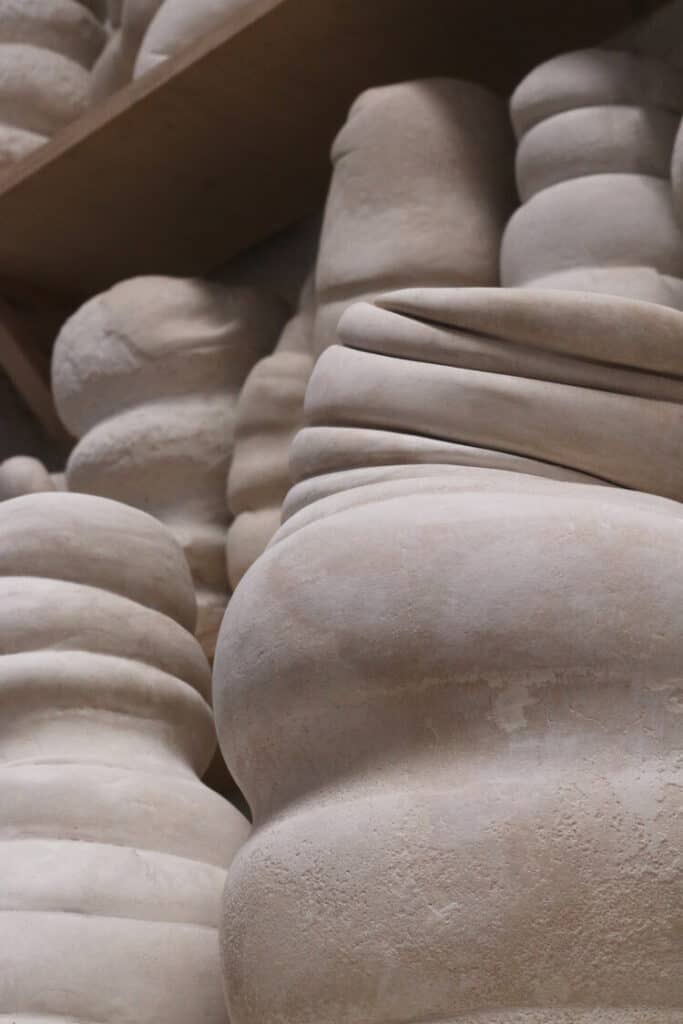
I’m so happy to hear that. I had a phone call last week with an artist called Tessa Silva who is going to contribute to Mater. Her sculptures are made from a by-product of the milk industry, which she sources directly from UK farmers. They are the most amazing, strange sculptures. I am completely enamoured. They look so soft and almost intestinal, but I learnt from her that they are solid and very heavy. For her Mater contribution, she will be talking about the process of turning milk into a solid sculpture, and what working with waste milk means through its historical, social, political and environmental contexts.
I am also excited to have just confirmed the involvement of Pei-Ying Lin, who works with biology & zooming into the micro of cellular life. Pei-Ying will be talking about the coronavirus from a non-human-centric position.
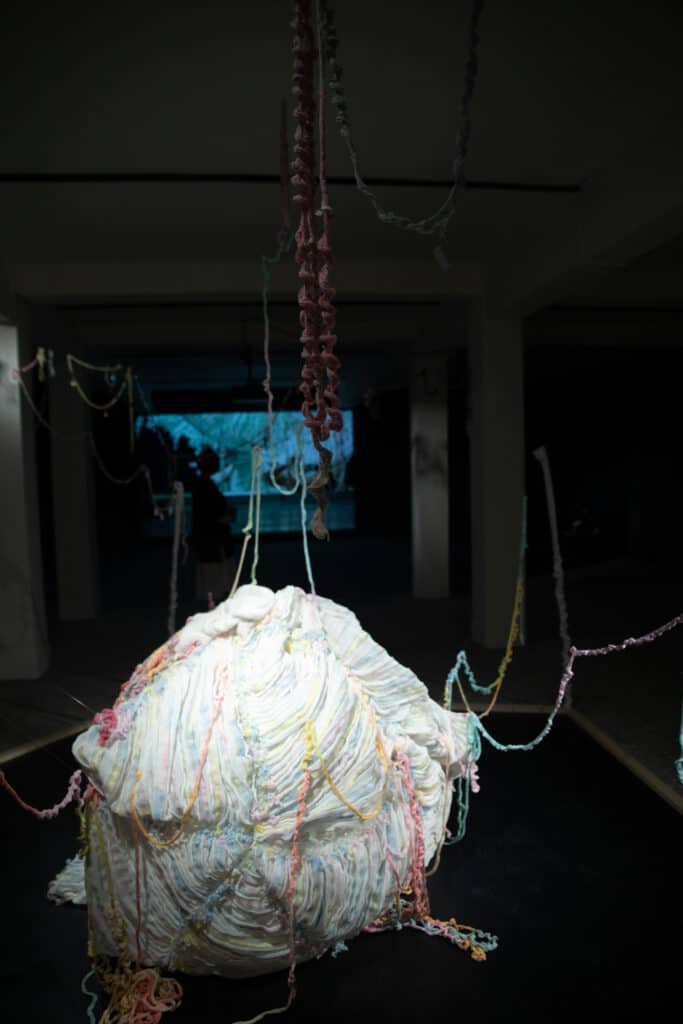
You’ve managed to get arts council funding which is fantastic – seeing that official brand mark on there was such a proud moment for me having followed you so avidly. What was that funding process like and what does it mean for you and Mater?
This was an amazing achievement and it gave me a lot of confidence in the project. I think the most exciting thing about getting funding was that it allowed me to properly pay people for their ideas, which is quite rare in the arts. Often the time and ideas of an artist are considered free, with the object or product being disproportionately priced. A lot of the artists I have spoken to are excited to have time to explore projects in a deeper way through writing and to know they are being paid for it. Some of the contributors are making art objects or design objects, but a lot of them are writers or philosophers, so it is about ideas as opposed to stuff.
The overall process for applying for funding was really extensive, I think the final pdf version of my application was like 50 pages. It’s quite an undertaking, so you have to really commit to that idea. But I think it can only be a good thing to refine a project to that extent and to make sure you are considering everything.
I’ve personally noted a real change recently online in how people are documenting their process, references and materials – things seem to have become more editorial and long-form in their writing – is this something you’ve noticed and how does this lend itself to your project do you think?
Definitely, not only is it juicy to sneak behind the scenes, but we actually have to know now. The artworld can be wasteful, and although in its very fabric it will continue to be about making things, it isn’t exempt from needing to care about its impact. But as well as that, we see image after image fighting for our attention through screens on a daily basis. But art has always been about much more than that. Social media was never going to reduce art to a glance at an image, we will always want to dive into someone else’s world. I think this lends itself to Mater too because people have enjoyed reading the stories alongside each image which is cool.
I’ve just read you have an exciting new website in construction for Mater, what can we expect to see? Can you tell us a little about the designer Victor Hwang and his vision for the site?
Victor is amazing, he has really brought the website to life as a piece of art. He has a deep interest in how the internet is not different to other materials, how it has a material impact, and how you can learn how to work with it like a sculptor might learn the properties of clay. Through thinking about the materiality of code, he has uncovered some interesting insights into how design can raise or lower the carbon footprint of a website. For example, using popular fonts means fewer download costs, as does removing videos from the site, and compressing the images to a lower resolution. We will be leaning into this low-tech aesthetic, to challenge the kind of design which is trying to constantly catch our attention. He recently gave a really good interview with FAD
How can artists get involved in the project, and how can we find out more?
By joining the conversation, attending the live events, sending me your thoughts (we will have moments throughout the project where people will be invited to share their own research and ideas on certain topics). Joining the community and the conversation!
For now, the best way to stay in touch is to follow Mater on Instagram, and sign up to free tickets to our live online launch.
–
The full list of Mater contributors are Faber Futures, Noland Oswald Dennis, Jussi Parikka, Matthew Rowe, Hannah Rowan, Shahpour Pouyan, Feifei Zhou, Christian Brooks Keeve, Jareh Das, Robin James Sullivan, Elena Khurtova, Tessa Silva, Heather Barnett, Pei-Ying Lin
Ocki Magill is the founder of Blue Shop Cottage Gallery in South East London, established in 2018. The gallery specialises in emerging and mid-career artists with a long roster of shows in the physical space and online throughout the year. Their ‘works on paper’ show is a hotbed for emerging talent and the gallery now represents a handful of artists and will be appearing at London Art Fair 2022. As well as solo and group shows, the Blue Shop programme includes interviews, talks, workshops and residencies to encourage community and creative learning. The Blue Shop audience of artists and collectors worldwide is truly a familial one.
‘The New Talent Hub’ – Elle Decoration

